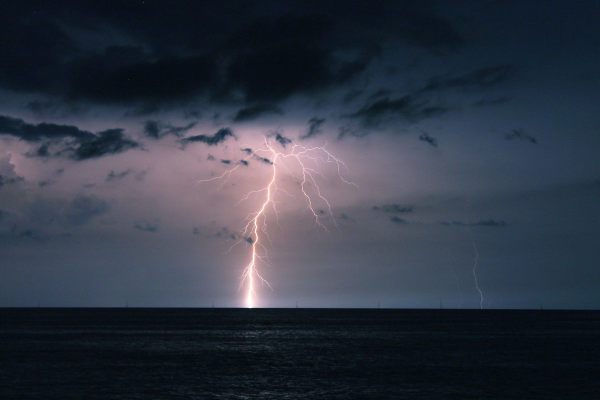Watch Lightning From Above, Thanks to a New Satellite
The data it is producing can help provide earlier warnings for severe weather.
At a safe distance, lightning can be one of nature’s greatest shows, but big electrical storms are even more incredible when seen from space. Astronauts on the International Space Station get a very exclusive view, but NASA’s new GOES-16 satellite is making that perspective available to everyone. It recently captured a huge electrical storm as it swept across the eastern United States.
The newest Geostationary Operational Environmental Satellite (GOES), launched last November, hangs out 22,300 miles over the Americas and collects weather data for agencies such as the National Oceanic and Atmospheric Administration. It’s still getting settled into its orbit, but the first video from its Geostationary Lightning Mapper (GLM) is a strong debut. The short video captures an April 28–29 storm that spawned a whole lot of lightning, a couple of tornadoes, and a blizzard in Kansas. The GOES-16’s infrared camera offers another view of the storm.
Most instruments on Earth only track cloud-to-ground lightning strikes, but the GLM can track cloud-to-cloud lightning, too, which can help meteorologists track storm severity. Better data can mean earlier warnings, and as anyone who has had to take cover or evacuate in anticipation of a severe storm knows, an extra 15 minutes can make all the difference in the world.










Follow us on Twitter to get the latest on the world's hidden wonders.
Like us on Facebook to get the latest on the world's hidden wonders.
Follow us on Twitter Like us on Facebook